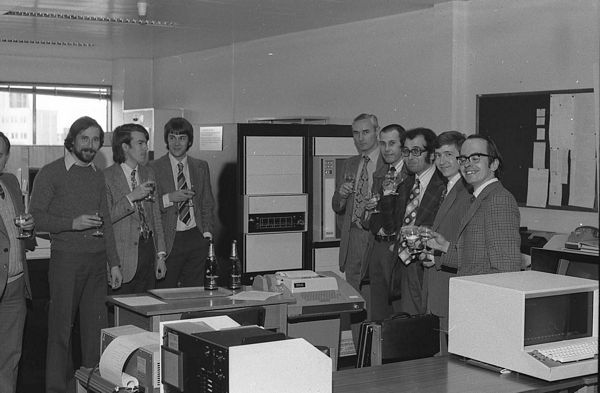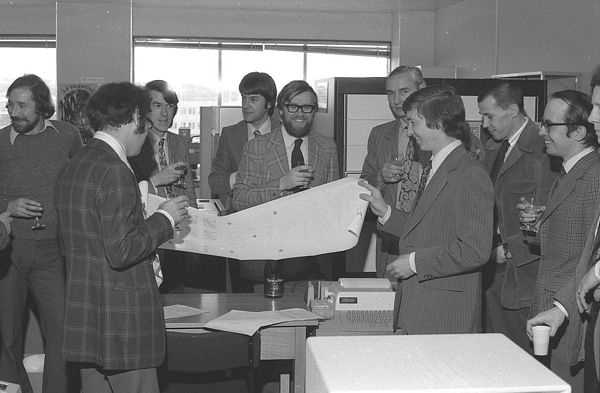


The Prime 400 was delivered to RAL on 3 December 1976 and started an internal service to users in January 1977. The initial configuration was:
The machine was a great success and turned out to have twice the CPU power of the GEC 4070 but the 4070 performed well interactively when the workload was not over-demanding. In consequence, the decision was made to install Prime systems in demanding environments and GEC systems in less demanding ones.
For the next 12 years, Prime systems were a major part of the UK academic engineering community's interactive computing facilities. About 30 systems were installed in 9 locations with models being replaced my larger systems as the programme expanded.
These pages give some of the history of the involvement with Prime. A more formal presentation is given in the paper, Prime and the UK Academic Engineering Community, by Mike Jane.
The FORTRAN system on the PRIMEs was enhanced by software written locally. FINGS was a simple interactive graphics system. ROOTS was a sophisticated structured programming tool that allowed FORTRAN programs to be developed in a robust and structured way. Two translator writing systems, TREE-META and META II were used in developing user-friendly front-ends to a number of products.
Computer Weekly for 28 April, 1977 reported:
BENCHMARK simulation of six users editing, compiling and running large engineering programs was among the tests successfully completed on a Prime 400 during acceptance trials at the Science Research Council's Rutherford Laboratory. The machine is part of the SRC's interactive computing facility, and is to be used for software development and to assess a multi-user system for engineers engaged on SRC-sponsored research. The assessment is being done in conjunction with groups at Cambridge, Glasgow and Leeds Universities. It is planned to start a general user service later this year.
The completion of the 400's trials was celebrated by Rutherford staff and Prime personnel, some of whom are pictured right. Left to right, Richard Hilken, Dr Cliff Pavelin (back to camera), Dale Sutcliffe, Rob Witty and Len Ford, all of Rutherford; Rex Blagg, Prime's senior sales executive for government business; David Thornley, Prime sales engineer responsible for the SRC machine; Eric Thomas of Rutherford; and Professor Bob Hopgood, head of the Interactive Computing and Graphics Group at Rutherford.
